By Michael Holter
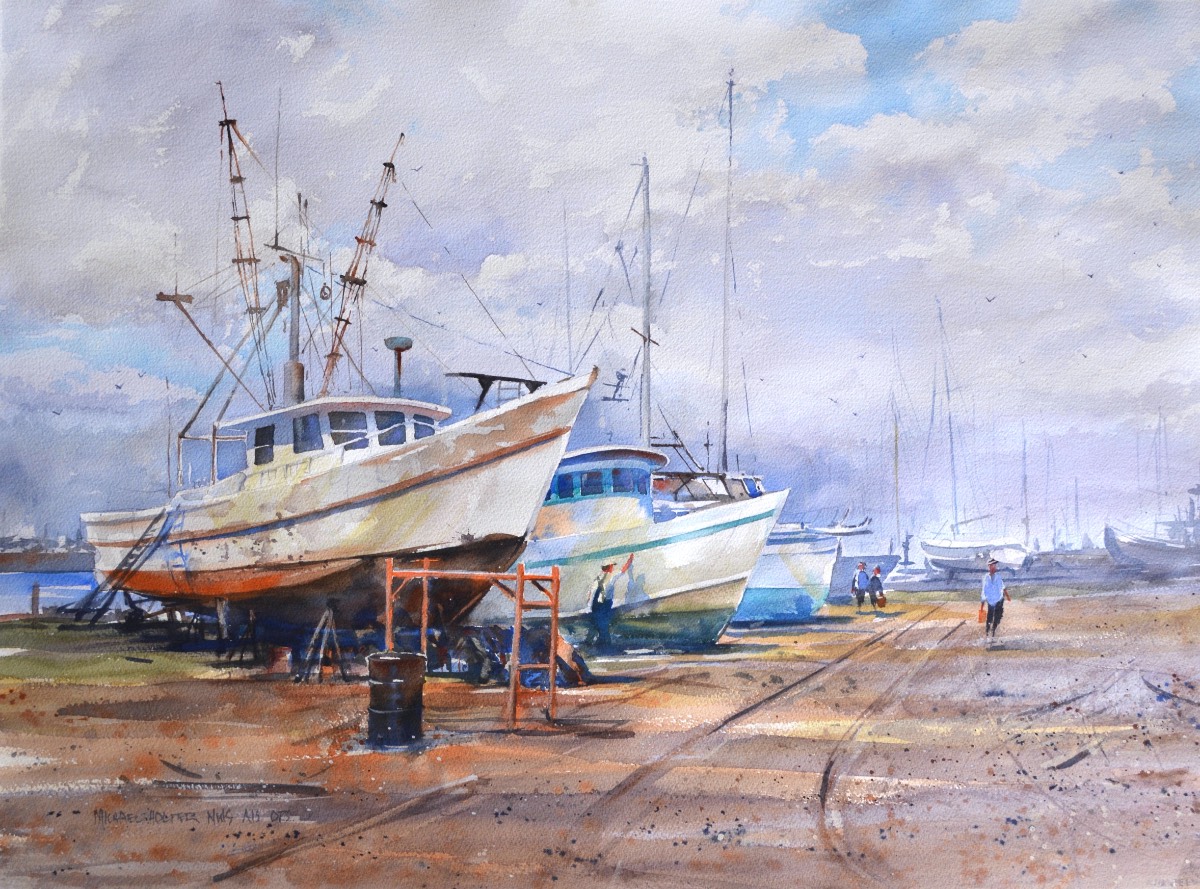
Without adding much action or significance to the painting, sometimes the sky is merely the background. When I include a good portion of sky and cloud detail, there must be a good reason to do so. I ask myself, how will the color of the sky, clouds, or atmosphere affect the mood of the painting? How will the clouds contribute to the composition of the rest of the painting?
When painting watercolor landscapes the colors and detail of the sky can be minimal, especially if the center of interest is a more complex building or other subject. For a sunny day, I often try to make the sky (background) cool at the top (cerulean) and graduating to a warmer tone (raw sienna) near the horizon to simulate the way the atmosphere near the horizon affects the color. When the sky contains dramatic clouds that are important to the overall effect, putting in the time, work, and planning are worth the effort.

I’m particularly drawn to skies that bring the most focus to the rest of the painting. Often the sky is minimal and I only need a gradation of color to set the tone that describes the atmosphere. When I’m painting a rapid watercolor and I want the impression of sky and clouds that offer some direction, I’ll use broad, wet brushstrokes to add stratus clouds. Cumulus clouds are much more involved and are best included when the sky is a major portion of the painting. In general, watercolor lends itself to expressive, dramatic clouds when there is enough space to give them the attention they need. Sometimes letting the brush skip over areas of dry paper leaves just enough white to imply cumulus clouds. When the sun is low and the sky is going through rapid changes, I try to capture the impression of the scene as quickly as possible. The sky is changing second by second, and I can’t get hung up on the details or it won’t be there the next time I look up.
The beauty of using watercolor to create the effects you see in a sky is that what you are seeing is actually the result of water particles in the atmosphere, so it’s a natural fit. Often, when the sky is the most dramatic, the humidity is high and watercolor dries slowly. That can be helpful when you’re patient and engaged in the painting, but when in a time crunch, for example during a plein air event, the slow drying time can be a negative.
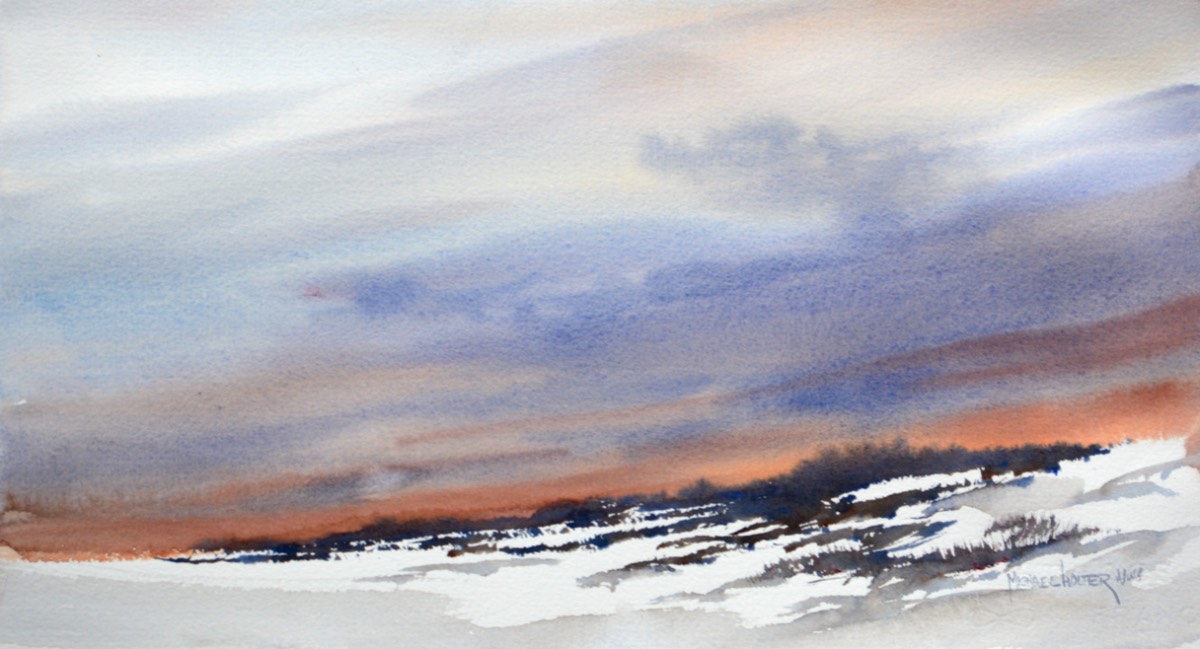
Conversely, dry air or wind can cause the painting to dry too fast. Having a small spray bottle with water to mist the surface to keep the painting active will help keep the surface workable. With experience you learn to adjust your working style to the conditions. Painting with an umbrella or anywhere out of the sun is often one of the first considerations when selecting a painting location with watercolor. Keeping the paper in the shade is helpful in determining values and in controlling the moisture on the paper. Since a watercolorist can’t tone the surface like an oil painter, the white of the paper makes it difficult to determine the values when in direct sun.
When the sun is below the horizon, the light becomes highly influenced by the atmosphere at the earth’s surface. Painting a cloudless dawn or dusk sky in watercolor allows me to use one of the basic “principles of design” as the main ingredient — gradation. By working wet-into-wet and applying a blue or cool hue at the top of the painting and working my way to a warmer hue near the horizon, I can achieve a very soft and subtle gradation that will represent what I see in front of me. If I want to add some cloud forms, many times the clouds are much darker than the sky behind them. These are easily placed onto the slightly damp surface. By using the wet of the paper and the proper paint to water ratio — which is only learned through experience — I can create the wispy atmospheric clouds that evoke the moment in time.
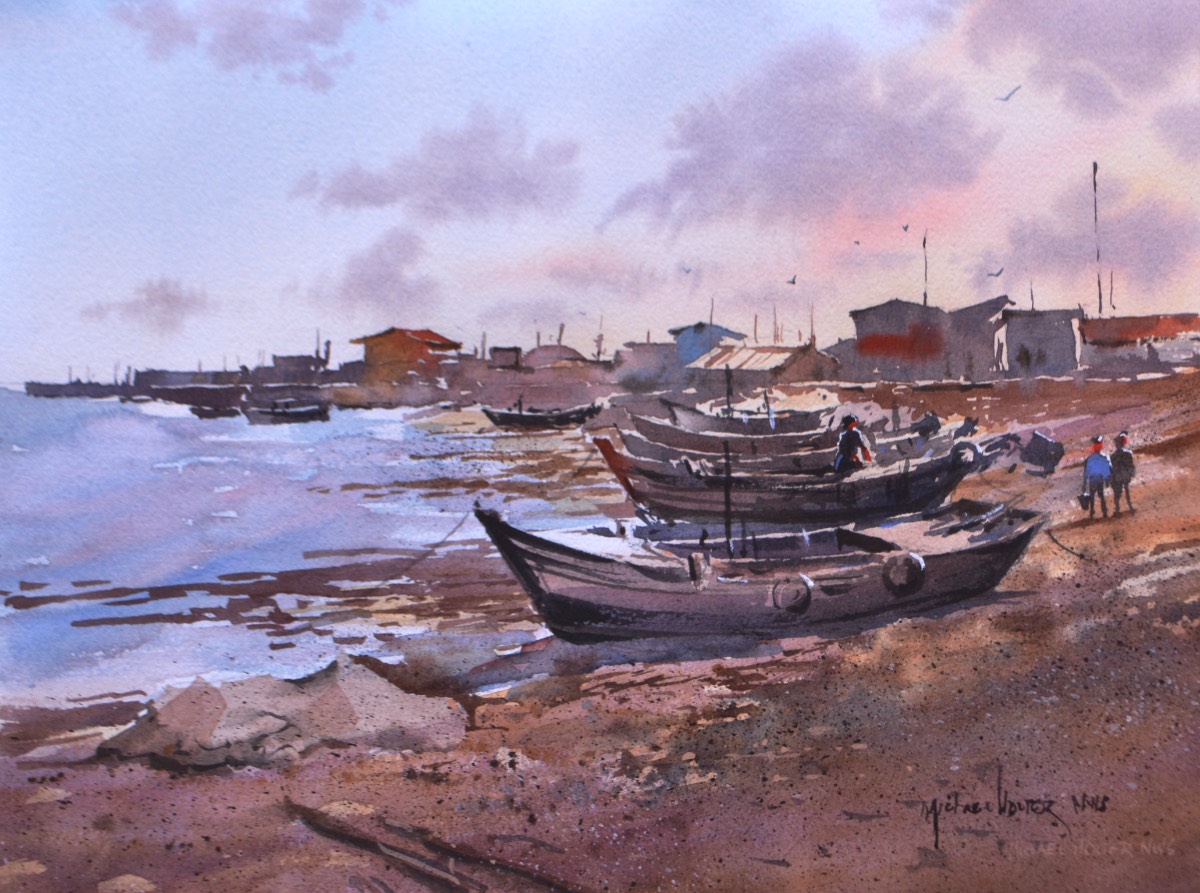
Watercolor Painting Demo
Step 1
Michael Holter adds his initial wet-into-wet washes to establish the atmosphere of the scene.

Step 2
He then quickly captures the clouds with a few wet brushstrokes.
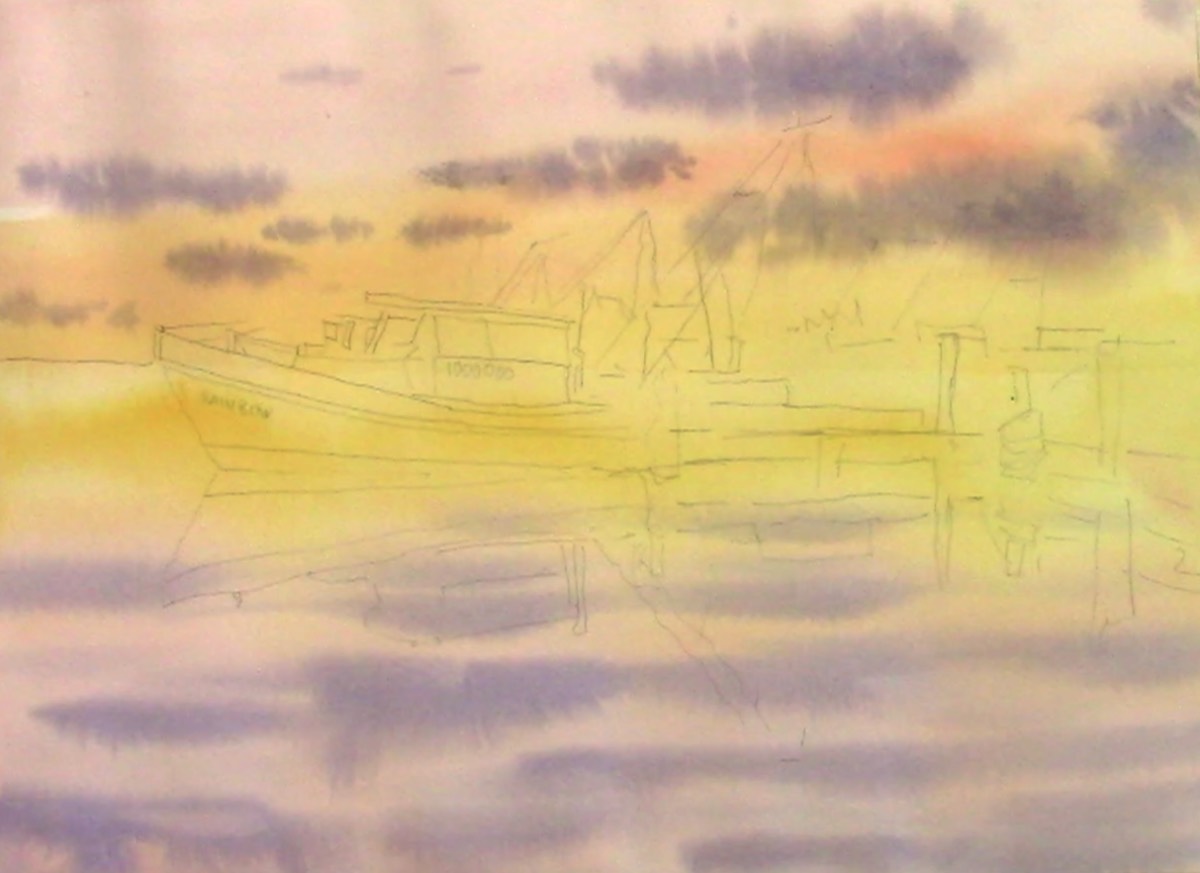
Step 3
Here, he builds up color in areas of the sky then begins painting the boat and docks.

Final Step
The artist finishes with a few details, including the birds in the sky.
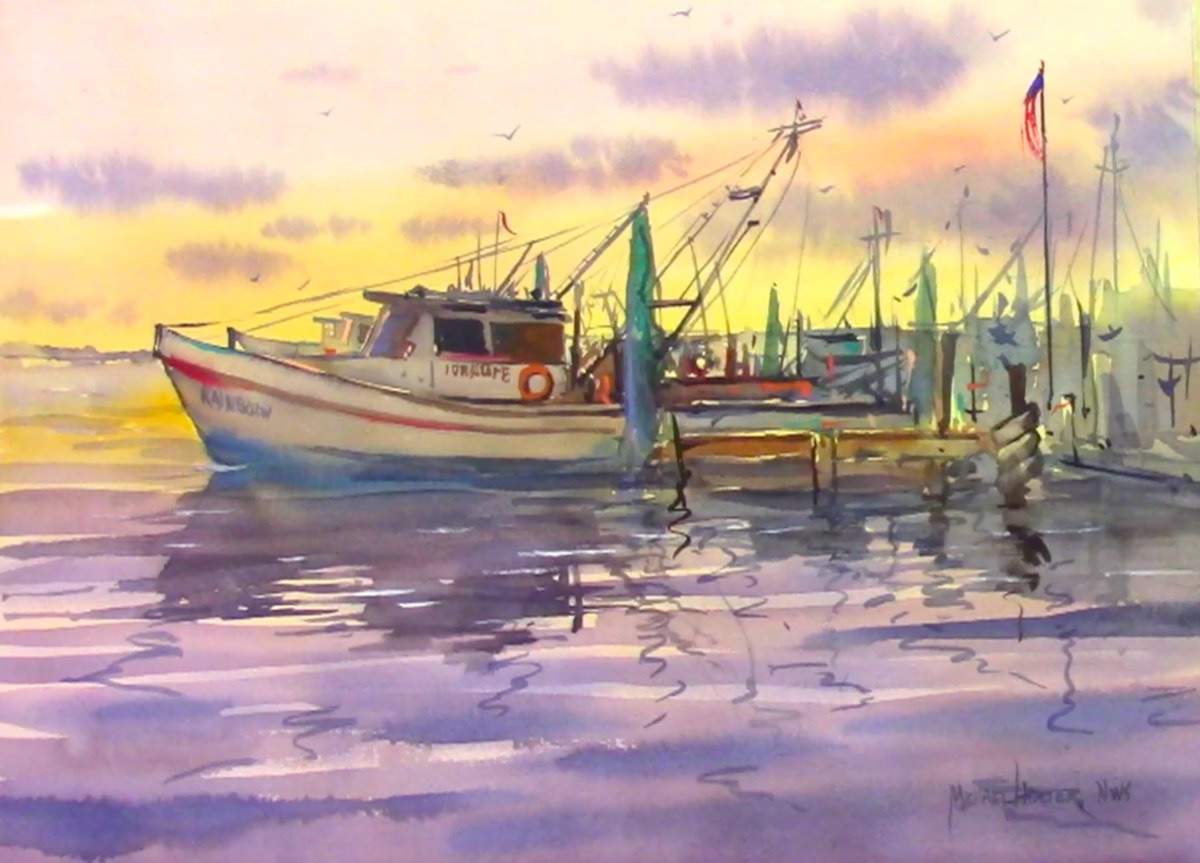
Michael Holter shares his watercolor process in a variety of video workshops, including “Clouds & Sky In Watercolor And Oil.”


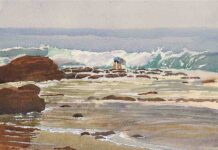





[…] Follow along as Michael Holter demonstrates his process for painting the sky. […]